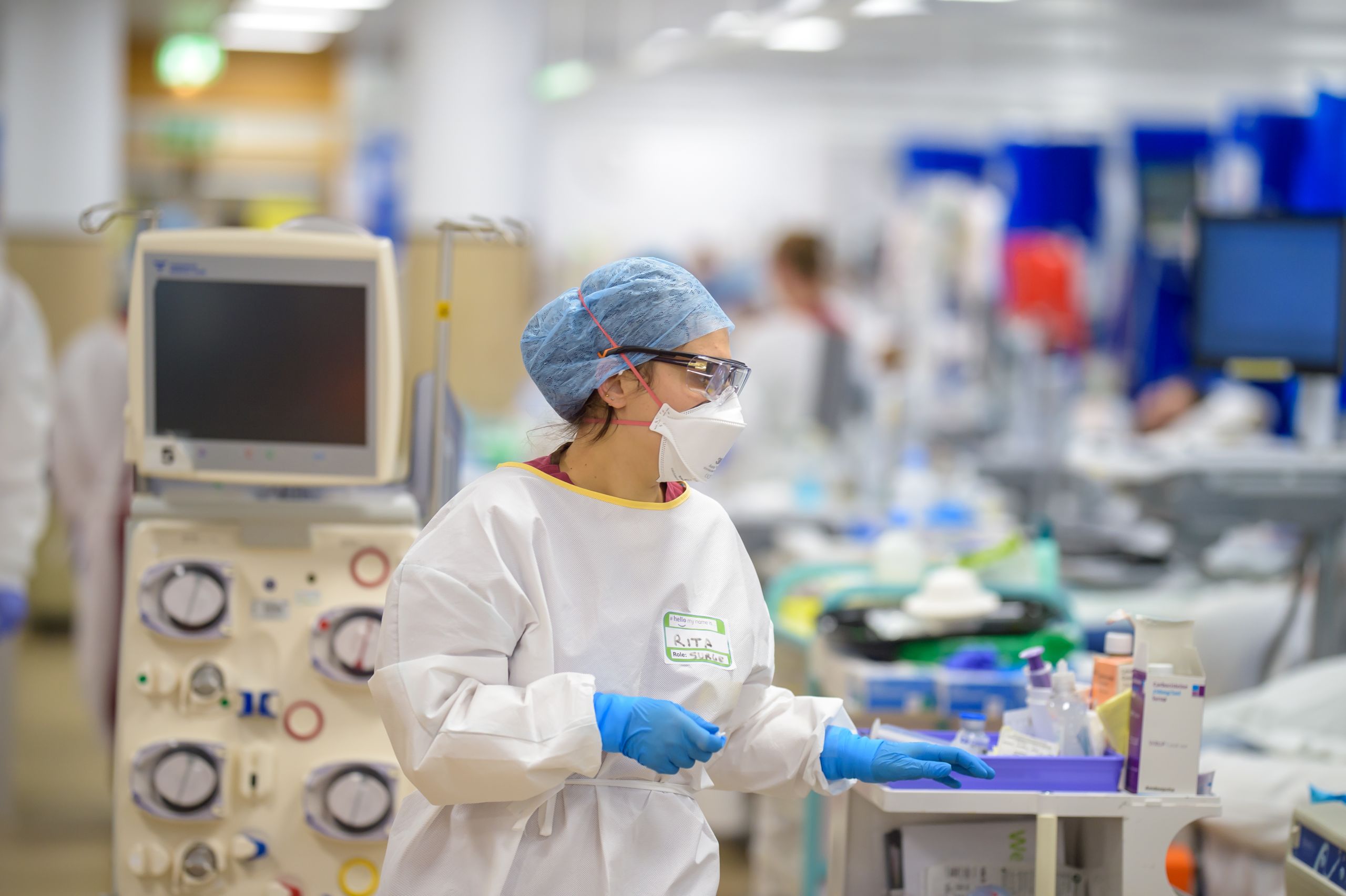Our COVID-19 story
Told by our staff

How Guy’s and St Thomas’ responded to the first wave of the 2020 COVID-19 pandemic
There are many ways to tell the story of the most devastating pandemic of the last 100 years – in the soaring number of cases and deaths, in the suffering of bereaved families, in the loneliness of lockdown, in the fear of the elderly and vulnerable and in the social and economic harm that has affected every corner of the country.
Here, in the interviews that follow, is another approach. It is the story told in the words of the hospital and community staff on, or close to, the front line. And what emerges is that despite the gut-wrenching fear, the tragic loss of life, the endless days and sleepless nights, the sweat, the toil and the tears – they were having the most momentous time of their professional lives.
This is not to say they were happy, or cheerful, or untouched by fear, sadness and exhaustion, or insensitive to the suffering and death around them. Quite the reverse. But they were seized by the absolute centrality of Guy's and St Thomas' to the fight against COVID-19, by the vital necessity of keeping it up and running and by the terrible importance of what they were doing.
Every member of staff – consultants, junior doctors, nurses, therapists, managers, porters, engineers, financial planners – played their part.
It was what they trained for, what they studied for and what the NHS was founded to do. For many, it was the most intense experience of their working lives, a time in which rivalries were forgotten, bureaucracy fell away and the Trust’s staff pulled together in an unprecedented team effort. And all under the watchful eyes of a nation in suspense, waiting to shower them with accolades.
The 30+ interviewees, selected by the Trust, represent only a snapshot of the views of 18,000 staff. But each provides their own take on the seismic events seen from their own perspective. By criss-crossing the same landscape, they help map the confused terrain and provide a rich account of one of the most challenging times in the Trust’s history.

There are extraordinary stories. Staff scouring the world for ventilators and PPE and chartering a Virgin jet to fly them back from China. Building a new oxygen tank and driving a pipe through the hospital in 16 days. Shifting the paediatric intensive care unit at Evelina London, and its young critically ill patients, to make room for equally sick adults. Debating whether to cancel cardiac and cancer cases to create capacity for COVID-19 patients who would otherwise die. Watching events in northern Italy unfold, as fears grew that a catastrophe was looming. Viewing the rows of patients on ventilators, all with the same illness, that experienced consultants had never seen. Managing the admission of Prime Minister, Boris Johnson, when the eyes of the whole world were on St Thomas’. Organising the donations that flooded in, starting with 100,000 Greggs biscuits.
Above all, they had to cope with the biggest anxiety of all – how to maintain the supply of PPE, how to ensure each individual had the right equipment to be safe, and how to manage the frustration many felt at the frequently changing guidance.
The Trust’s singular focus throughout remained on the care of patients. But the organisation is also a collection of individuals who each faced their own personal struggles many of which were amplified by the pandemic.
For the first 6 weeks from mid-March to May, the Trust hammered along at a frantic pace. Once the peak of wave one was passed and admissions started to fall, fatigue set in. With their adrenaline spent, some staff felt the excitement give way to a new sense of loss. And they wondered fearfully about the next wave.
The 3 months of summer allowed them to begin to re-charge their emotional batteries. The Trust permanently expanded critical care, segregated wards, protected its surgical capacity, ramped up remote consultations for outpatients and increased its resilience. It learnt a great deal from the first wave and was better equipped for the next.
The photographs in these stories were taken at different stages of the COVID-19 response with varying guidance for personal protective equipment (PPE) and social distancing.
Interviews by Jeremy Laurance, former Health Editor of The Independent. Photography by David Tett and many of our staff.
Read the stories


